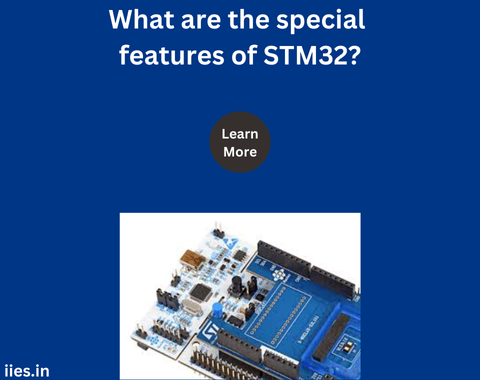
The STM32 family of microcontrollers, developed by STMicroelectronics, has earned a strong reputation for its powerful performance, flexibility, and energy efficiency. STM32 microcontrollers (MCUs) are widely used in embedded systems, consumer electronics, industrial automation, and other applications where precise control and connectivity are essential. The STM32 product lineup is vast, ranging from entry-level MCUs to high-performance solutions that cater to various industries. In this article, we will explore the special features that make STM32 microcontrollers stand out from the competition, providing designers and engineers with the tools they need to create efficient, reliable systems.
STM32 microcontrollers are known for their scalability, offering a broad range of devices with varying capabilities. The STM32 family is divided into multiple series, such as:
Each series caters to specific needs, allowing developers to select the right MCU based on the performance, power, and peripherals needed for their application. This flexibility is one of the main advantages of STM32, as developers can transition between different performance tiers without changing their development environment or toolchain.
One of the standout features of STM32 microcontrollers is their energy efficiency. STMicroelectronics has developed various ultra-low-power families (e.g., STM32 L series) specifically designed for applications where battery life is crucial. These MCUs support several power-saving modes, including:
In addition to these modes, STM32 MCUs often feature dynamic voltage scaling, where the core voltage can be reduced during lower processing loads, further enhancing energy efficiency. The focus on power efficiency makes STM32 ideal for IoT devices, wearables, and medical instruments that require long-lasting, battery-powered operation.
STM32 microcontrollers are known for their extensive peripheral integration. Each STM32 MCU comes equipped with a wide range of peripherals that enable developers to interface with various sensors, actuators, and communication protocols. Some of the key peripherals include:
The rich peripheral set eliminates the need for additional external components, simplifying the design and reducing overall costs. STM32 microcontrollers’ robust peripheral capabilities allow developers to build versatile and feature-rich systems.
At the heart of most STM32 microcontrollers lies the powerful ARM Cortex-M core architecture. STM32 MCUs typically feature Cortex-M0, M3, M4, M7, or M33 cores, depending on the model and series. These cores are optimized for real-time performance and offer a balance of processing power and efficiency. Some standout features of ARM Cortex cores in STM32 microcontrollers include:
The ARM Cortex cores provide deterministic, low-latency processing, which is essential for real-time applications such as robotics, industrial automation, and automotive systems.
In today’s connected world, security is a critical concern, especially for IoT devices and embedded systems. STM32 microcontrollers are designed with security in mind, incorporating several hardware and software features to protect data and ensure the integrity of the system:
The security features of STM32 microcontrollers make them suitable for applications in industries such as healthcare, automotive, and consumer electronics, where data protection is paramount.
One of the major advantages of working with STM32 microcontrollers is the extensive development ecosystem that surrounds them. STMicroelectronics provides a suite of tools, software libraries, and middleware to simplify the development process:
The development ecosystem around STM32 microcontrollers makes the design process more efficient and accessible, even for engineers who are new to embedded systems.
As artificial intelligence (AI) and machine learning (ML) continue to gain traction in embedded systems, STM32 microcontrollers have evolved to support these advanced features. STMicroelectronics offers the STM32Cube.AI platform, which allows developers to deploy pre-trained neural networks on STM32 MCUs. This makes it possible to run AI inference directly on the microcontroller, enabling intelligent edge devices for applications such as voice recognition, image classification, and anomaly detection.
STM32’s AI capabilities, combined with its energy-efficient performance, make it an attractive choice for embedded AI applications where power consumption is a concern.
STM32 microcontrollers offer an impressive array of features that make them ideal for a wide range of applications. From their scalability and energy efficiency to their rich peripheral set, advanced security, and real-time performance, STM32 MCUs provide a powerful platform for embedded system development. The robust development ecosystem, combined with support for AI and machine learning, positions STM32 as a leading choice for engineers and developers looking to create innovative, efficient, and secure solutions in today’s technology-driven world.
Indian Institute of Embedded Systems – IIES